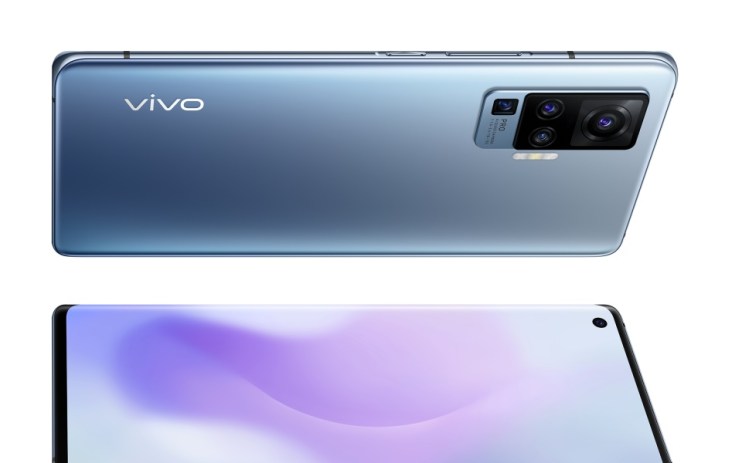Vivo X51 review: The gimbal-er’s fallacy

Dongguan, located in the Guangdong province of China, is one of those places of international significance that you’ve probably never heard of. With a population of nearly 7.5m – which would comfortably make it the second largest city in the UK – it’s one of China’s many “global factories”, vast industrial zones from which companies across the world manufacture and distribute their goods. It was also, until recently at least, known as the “Eastern Amsterdam” or “China’s Sin City” owing to its sizable sex industry, which at its peak was thought to employ more than 500,000 people.
Dongguan is also home to Vivo, one of those phone manufacturers that’s of international significance that you’ve probably never heard of. It’s the fifth or sixth biggest player in the world handset market (it trades places with fellow Dongguan-based company Oppo) but it has yet to launch a phone in a European market dominated by Apple and Samsung. Until now.
It’s an interesting manufacturer, vying for attention with flashy features rather than solid specs. It was responsible for the first “pop-up” selfie camera, which attempted to solve the problem of “The Notch” by having the camera spring from the top of the handset like a jack-in-the-box. It was also among the first to bring a dual display phone to market.
The Vivo X51’s selling point is its “gimbal-style” camera, which promises silky smooth video footage the likes of which would have required a little train-track and a team of burly men to achieve a decade ago. But more of that later.
The first impression of the X51 is that it’s a solid, quality handset. It uses the tall, thin ‘letterbox’ format that makes it easy to swipe the lower half of the display with your thumb without adjusting your grip.
It’s equipped with a Samsung AMOLED display, giving it vibrant colours and deep blacks, although to my eyes it lacks the elegant naturalism of the iPhone’s Retina display. The screen wraps over the edges of the handset, and the rear is finished in a matt glass that seems to be designed to stop it slipping too easily from your hand. A few years ago, it would have been spectacular, but in today’s world of exquisitely-crafted phones, it is merely very nice.
One quality of life inclusion that really stands out in these times of face masks, is the super-fast in-screen fingerprint scanner, meaning you don’t have to type your password every time you buy a flat white.
It runs a barely-tweaked version of the latest Android, which is a good thing given the propensity of Chinese handset manufacturers to use highly customised and objectively worse versions of Google’s operating system.
In terms of price, it’s in the upper-mid range at £749, with the savings coming from a slightly underwhelming – on paper at least – Snapdragon 765G processor. In practice, if there’s a drop-off in performance compared to phones with top-tier hardware, the difference is negligible, but if you plan on using it for more than a couple of years that may start to show.
So far so average. But on that frosted glass rear, you will spot an array of digital eyes peering out, with a 2x zoom portrait photo lens, a 5x “periscope” zoom lens, an ultra-wide lens and a main camera that boasts 48MP as well as that gimbal.
The gimbal is the biggest selling point, essentially an advanced form of optical image stabilisation, which cushions the lens to the extent that you can actually see it bobbing around in its casing. If you take a video and quickly pan the handset, it will take a second to slowly glide into position, which is low-key exciting the first few times you see it.
When I took it outside for a real test-drive, however, I was a little disappointed. Filming my daily walk through the City in both daylight and night (as you can see in this altogether unscientific footage, which was admittedly shot on a windy day), the stabilisation is noticeable, but – to my eye at least – no better than a higher-end iPhone; the fact the latter relies more heavily upon software to stabilise the video is rather academic.
Where that gimbal really does shine is in low-light still photography, allowing you to take long exposure pictures without the shake of your hands impacting the shot.
Does that justify a £750 price tag? Probably not. There may be edge cases for the man or woman who simply must take excellent nighttime pictures but absolutely will not, under any circumstances, carry a stand-alone camera. Who that might be is anyone’s guess: someone who really loves taking pictures of their mates in night clubs, perhaps?
While the X51 does have a faint whiff of the exotic – unlike offerings from Samsung or Apple, you’re unlikely to see many of these in the wild – the fact it looks so much like every other phone makes this largely moot.
The X51 isn’t a busted flush, but if it’s heralding the arrival of a new handset manufacturer to the European market, it does so with a kazoo rather than a triumphant bugle.
